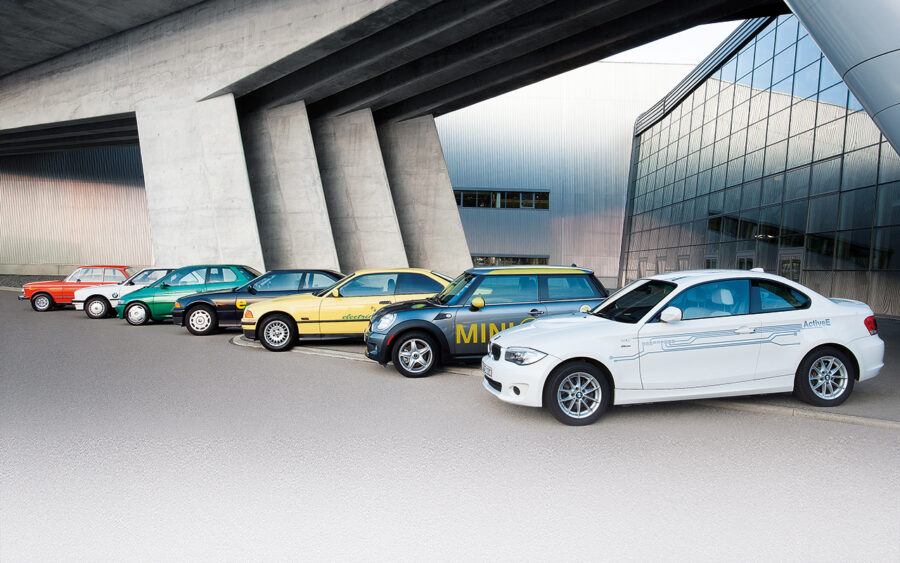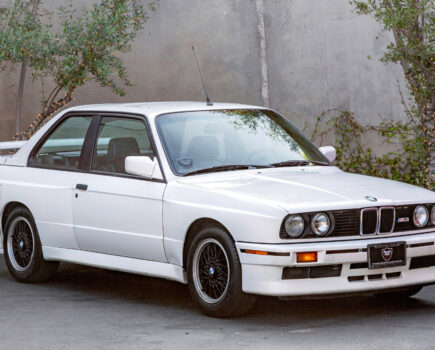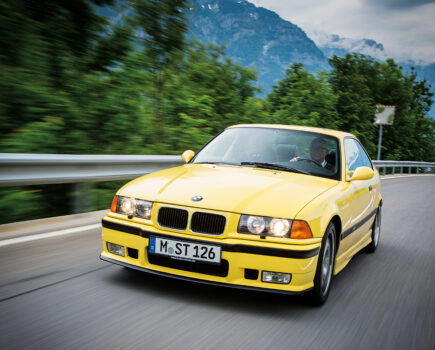BMW is famous for its mastery of the internal combustion engine – but it was also an early pioneer in the modern EV revolution
Words: Bob Harper Images: BMW
It’s virtually impossible to open a newspaper, magazine, your internet browser or your social media stream without being assailed by tales of climate emergency doom and gloom. Is the electric car the answer? Will Hydrogen play a part? And what will future electric BMW cars drive like?
Unless you have a particularly accurate crystal ball you’re unlikely to definitively discover the answer to those questions but what we can do is have a look back at what BMW has been doing over the last 50 years or so to be ready for this brave new world. Like most forward-thinking companies BMW has spent a considerable amount of time, effort and money into researching drive systems of the future – it hasn’t just suddenly jumped on the electric bandwagon without doing some research first.
Electrified BMW cars such as the i3 and i8 were utterly pioneering and perhaps a little bit ahead of their time, but BMW’s electric story actually started all the way back in 1969 when it constructed two experimental cars based on the 1602 to investigate whether an electric drive unit would be suitable for passenger vehicles. The engine was ditched and simply replaced with a bank of 12 Varta 12V lead-acid batteries while the gearbox was replaced by a Bosch DC shunt-wound electric motor with an output of 32kW (43hp) which sent drive to the rear wheels. With a top speed of 62mph and a 0-31mph time of eight seconds it wasn’t that sprightly and its practicality was stunted by a limited range – just 19 miles in stop-start city traffic. It did (just) manage to last the distance acting as a course car for the Marathon at the 1972 Munich Olympics though, and BMW had obviously given the limited range some thought as the batteries were mounted on a pallet that could be swapped over for fully charged ones.
Ultimately, BMW concluded that while the electric motor side of things would work there would need to be some significant advances in battery technology to sort out range issues. The project wasn’t shelved completely though and in the mid-70s BMW continued to test with a 700 LS it had lying around that was surplus to requirements. While it still used Varta lead-acid batteries it used a different Bosch motor and included a charger with leads that allowed the car to be plugged into the mains to recharge. During trials it made use of regenerative braking to help top up the batteries.
At the same time as BMW continued to dabble with electrification it was also looking at other potential forms of cleaner energy, by the late 1970s it has started to look closely at the possibility of using liquified Hydrogen and had its first test car on the road – an E12 5 Series. It would continue with this project up until the 2000s with E23, E32, E38 and E65 generations of 7 Series all being fitted with this clean fuel, but a lack of infrastructure eventually led to BMW putting its eggs into the electric basket.

In 1969 two electric BMW 1602 models were built with an output of 32kW (43hp). Range was just 19 miles.
During the 1980s BMW ran a project called the ‘Electric car with high-energy battery’ – perhaps not the most exciting of titles – but by using sodium-sulphur (NaS) batteries with an energy density three times that of lead acid ones, the problems associated with limited range were partly assuaged. Eventually eight E30 325iXs were converted to run as front-wheel drive machines powered by a 22kW (30hp) motor, while performance was no better than the Munich 1602s it could travel 93-miles on a single charge and put through its paces by the German postal service.
Encouraged by the performance of the NaS batteries in the 325iX test cars BMW set about designing a concept car that would showcase its new-found electric vehicle prowess and, after a scant 10 months’ development, the result was the E1 that it revealed at the 1991 Frankfurt motor show. It was a product of BMW Technik which had also been responsible for the Z1 and this was another forward thinking vehicle. BMW had realised that with the limitations of the batteries that were available at the time the best environment for an electric car was an urban one – thus the E1 was designed as a compact city car but still with room for four and their luggage.
It was a brilliant piece of packaging and at just 3460mm in length it was a good half a metre shorter than the i3 that would be its spiritual successor 20 years later. It needed to be lightweight so it was designed around extruded aluminium sections that were surrounded by a high-strength bodyshell, predominately made from recyclable plastic with an aluminium bonnet and bootlid. The batteries were located under the rear seat while the in-house designed electric motor was integrated within the rear axle along with the transmission. It had a range of around 100 miles in city driving and with a 32kW (43hp) motor it could manage 0-31mph in 6 seconds and reach speeds of 75mph.
BMW further refined the concept over the next couple of years, including adding a fast charger to its armoury so it could be fully recharged in around two hours, but at this stage it certainly wasn’t an economically viable production proposition. Undaunted BMW continued with the electric trials, now moving onto the E36 platform. It built 25 experimental vehicles, which were used for testing and honing new components in order to gradually bring electric drive technology up to production standard.
The first generation of these prototypes included eight models that took part in the world’s largest ever public field trial staged on the German island of Rügen. A number of manufacturers collaborated on this joint research project, which had the backing of the German Federal Ministry of Research and Technology, a further six test vehicles were incorporated into the fleet of the Bavarian State Government. Following problems with the sodium-sulphur batteries they were switched to the sodium-nickel chloride batteries used in the E1.
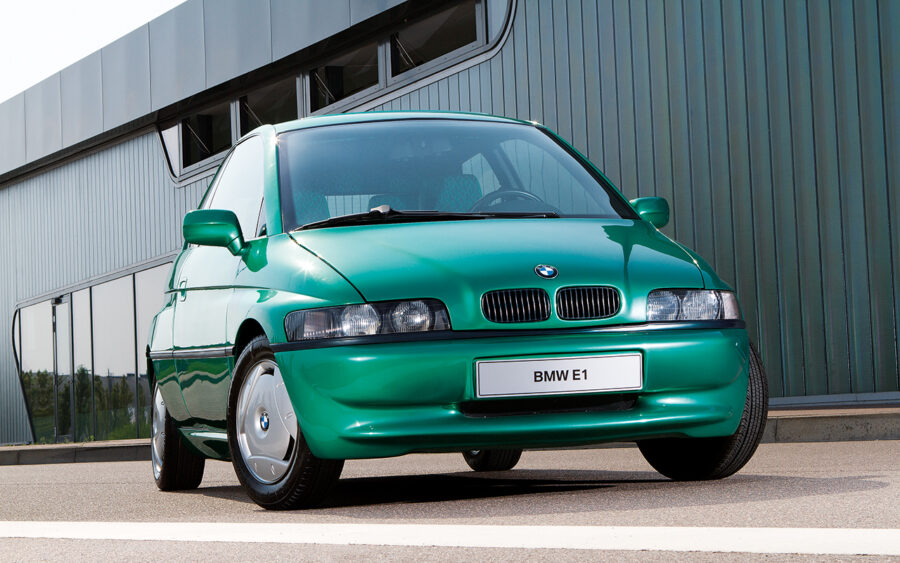
1991’s E1 was created by BMW Technik, designer of the Z1.
Over the course of development, electric motors with outputs of up to 45kW were used, which now weighed just 65 kilograms including transmission. Notable progress was also made with regard to the energy storage technology, with quick charging now enabling the batteries to attain 75 percent of capacity in just 40 minutes, the project’s engineers also succeeded in recuperating as much as 20 percent of the electrical energy during driving.
Up until this point the BMW electric car story had involved very low-scale prototypes but its next project was far more ambitious – the MINI E. This involved significant trials with carefully selected customers and corporations. Over 600 MINI Es were produced and were used as normal, everyday vehicles in order that BMW could glean ideas as to what the public wanted from an electric car. The trials started in 2008 and took place initially in the US, later extended to include Europe too.
By this point BMW had publicly committed to its ‘Megacity Vehicle’ that would go on to become the i3 – lessons learned from the MINI E project were vital in shaping how the i3 would become the company’s irst full-scale production electric car. While there was much to like about the MINI E it did have compromises – most notably the replacement of the rear seats with its battery pack – but it was a sprightly performer, offering up a 0-62mph time of 8.5-seconds, a 94mph top speed and a range of up to 155 miles under perfect conditions.
The success of the MINI E project prompted a further test with the Active E which would use pre-production versions of the drive system that would go on to power the i3. It wasn’t quite as powerful as the MINI E and had a slightly smaller battery pack but this meant that its practicality was far less compromised – it was a full four-seater. With 125kW (168hp) and 184lb ft of torque it could notch up a 9 second 0-62mph time and a top speed of 90mph and had a range of around 100-miles. Perhaps most importantly from a BMW fan’s perspective it was actually a hoot to drive with real punch when pulling away from standstill and, with practice, it could be driven almost exclusively by just using the throttle pedal, such was the effect of its regenerative braking. As an all-round package it was an excellent proposition and the perfect test bed for the i3’s mechanical make up.
While the i3 was waiting in the wings BMW was also taking its first steps into the world of hybrids. In 2010 it presented its first concept, the ActiveHybrid 5 that would go on to be a production model. It featured the 306hp TwinPower turbo straight-six with a 55hp electric motor that offered a total output of 340hp and 332lb ft of torque. It was perhaps more performance orientated than a fuel economy special and it didn’t have the best eco credentials. Its very limited (just two and a half miles) all-electric range was poor and in practice it was almost impossible to drive it normally in all-electric mode without awakening the straight six. Undeterred BMW went on the produce ActiveHybrid Threes and Sevens but its breakthrough moments in terms of electromobility were undoubtedly the arrival of the i3 and the i8.
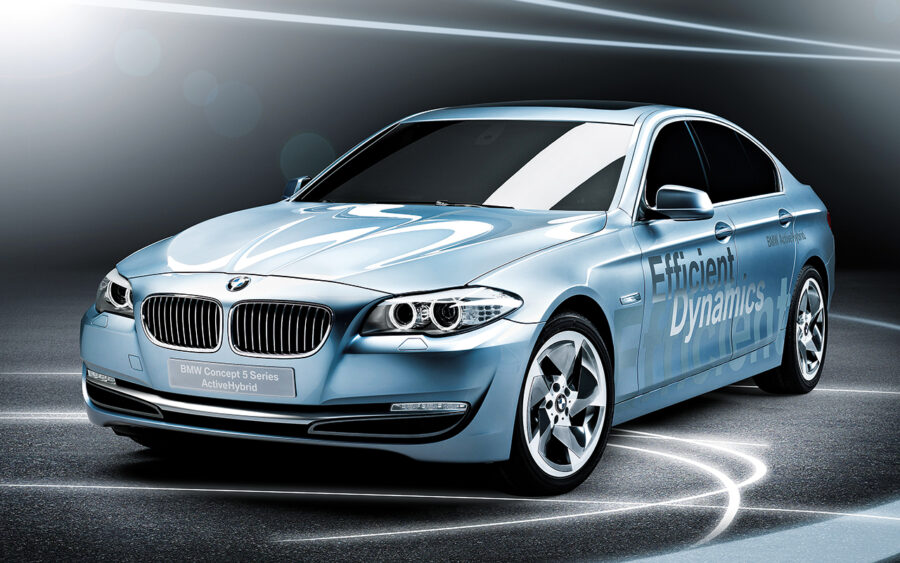
The BMW EfficientDynamics cars were a more recent project that informed current BMW i cars.
BMW’s brave new world was launched with the Vision EfficientDynamics concept that was unveiled at the 2009 Frankfurt motor show and it looked like no BMW before, or since for that matter. It would eventually morph into the i8 and along with the quirkily styled i3 – it set BMW on the road to electrification. Unlike offerings from other manufacturers which generally concentrated on shoehorning the electric gubbins into an existing model, both the i3 and the i8 were bespoke designs and very high-tech with it.
Both featured an extensive use of carbonfibre to mitigate against the weight of the batteries and they were perhaps ahead of their time. With news coming out of Munich that the i8 is to be axed in April and won’t have a direct replacement, it’s hard to see what BMW might have done to ensure it was more of a success. Not that it’s been a sales flop, but selling a £120,000 car that only had a 1.5-litre three-cylinder was a tough ask. It also suffered from being a car that you grew to love the further you drove it, a quick test drive not giving you a full picture of its considerable abilities. Perhaps if BMW was just launching it now it would have been more of a hit?
Initially the i3 struggled a little too, but it’s another car that customers seem to ‘get’ as it becomes increasingly familiar. It posted its best-ever sales figures in 2019 and is, to a certain extent, future proofed as newer, higher output battery packs have (and continue to) replace those that it originally featured, giving it significantly better range figures.
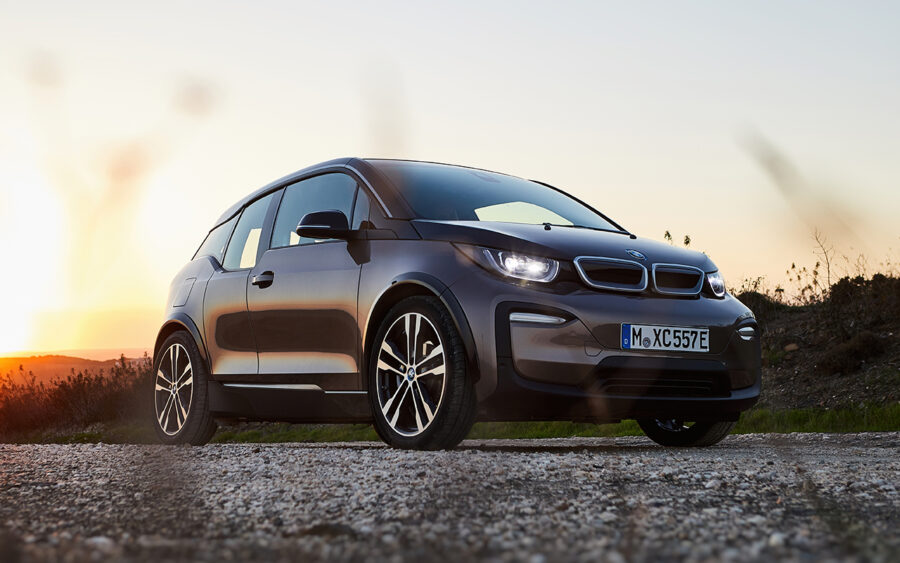
The BMW i3 was a technological tour de force that paved the way for modern production EVs
If the i3, i8 and the ActiveHybrids were the enablers they’ve done a good job. Electrification is now widespread throughout the BMW model line-up, with multiple ranges featuring a PHEV ‘e’ model. The X3 became the first BMW model available with three different powertrains – a conventional internal combustion engine, as a hybrid and as a pure battery electric vehicle. Where BMW is opting to be a little different to its peers is by not heading exclusively down the battery electric vehicle route, instead preferring to offer its customers a choice of powertrains as it believes that in many markets the appetite isn’t quite there for pure BEVs.
Still, there are a number of exciting modern BMW electric car offerings available, including the i4 and iX – while the forthcoming Neue Classe models, as previewed by the i Vision Dee concept, look set to bring the brand right up to date with sophisticated tech, retro design and efficient electric drivetrains. Even the 5 Series has now entered the electric age – and it’s safe to assume other BMW range staples will follow suit.

